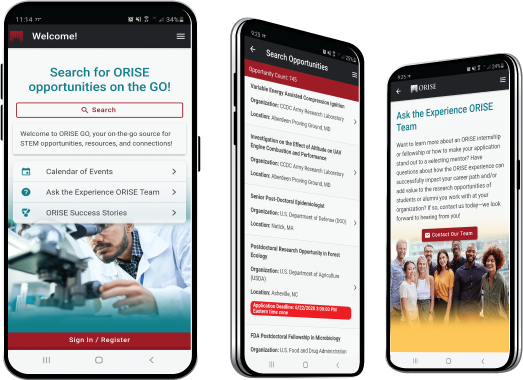Flood-induced Contaminants Fate and Transport from Hazardous Waste Sites
A complete application consists of:
- An application
- Transcripts – Click here for detailed information about acceptable transcripts
- A current resume/CV, including academic history, employment history, relevant experiences, and publication list
- Two educational or professional references
All documents must be in English or include an official English translation.
If you have questions, send an email to EPArpp@orau.org. Please include the reference code for this opportunity in your email.
A research training opportunity is currently available at the U.S. Environmental Protection Agency’s (EPA) Office of Research and Development (ORD)/National Exposure Research Laboratory (NERL). The appointment will be served with the Systems Exposure Division (SED) in Research Triangle Park, North Carolina or the Computational Exposure Division (CED) in Athens, Georgia.
This research project identifies potential environmental contamination in soil/sedimentation and far-field exposure to toxic materials due to flooding at hazardous waste sites. For example, several communities are located near Superfund sites, and are at risk of flooding during extreme storms and yet causal pathway between floods, contamination, and potential negative health outcomes remains unverified. This research project will link these pathways to identify potential neighborhoods within communities that are vulnerable to contaminant exposure in such an event. The information equips decision makers to anticipate and preemptively address vulnerabilities, build resiliency, prepare for decontaminations, and mitigate potential human health impacts. This project provides the participant opportunities to work with EPA researchers, EPA Regional collaborators and stakeholders. The research may result in peer-review publications as well as screening level planning tool to mitigate flood-induced contaminants transport.
The objectives of this research project are to develop interactive flood-induced contaminant transport maps as a screening tool for States’ emergency preparedness and disaster planning. The research participant may be involved in the following activities: (1) field sites visits and community engagements, (2) interacting with EPA Climate Resilience Screening Index, Urban Resilience Tool, and Community Environmental Resilience Tools, and (3) participating with collaborators on data acquisition and screening-level analysis, scenario analysis using hydrodynamic flood and fate-and-transport modeling, identifying community vulnerability and engaging stakeholders, and (4) presenting at conferences. The research participant will participate in the development of a hydrodynamic fate-and-transport model for contaminants (i.e., Water quality Analysis Simulation Program model) and adopt the results for a web based scenario vulnerability map. Applicants should be self-motivated individuals who are enthusiastic and eager to work as a team with other researchers on this project.
This program, administered by ORAU through its contract with the U.S. Department of Energy to manage the Oak Ridge Institute for Science and Education, was established through an interagency agreement between DOE and EPA. For additional information about this program, please visit https://orise.orau.gov/epa/. This appointment is full time for one year and may be renewed upon recommendation of EPA and contingent on the availability of funds. The participant will receive a monthly stipend based on level of education. Funding may be made available to reimburse the participant’s travel expenses to present the results of his/her research at scientific conferences. No funding will be made available to cover travel costs for pre-appointment visits, relocation costs, tuition and fees, or participant’s health insurance. The participant must show proof of health and medical insurance. The participant does not become an EPA employee.
The mentor for this project will be Pai-Yei Whung (whung.pai-yei@epa.gov). The desired start date is September 30, 2018.
Applicants must have received a master’s or doctoral degree in hydrology or in environmental engineering or a closely related field and modeling experience. The degree must be received within five years of the desired starting date, or all requirements for the degree must be completed prior to the start date. Experience in soil chemistry modeling (e.g., fate-and-transport, hydrodynamic models, Water Quality Analysis and Simulation Program model, HEC-HMS, HEC-RAS, SWMM, AGWA, SWAT, etc., GIS (ArcGIS0 and data mining are desired.

 ORISE GO
ORISE GO

The ORISE GO mobile app helps you stay engaged, connected and informed during your ORISE experience – from application, to offer, through your appointment and even as an ORISE alum!





